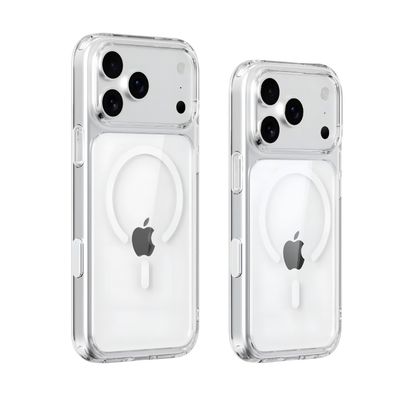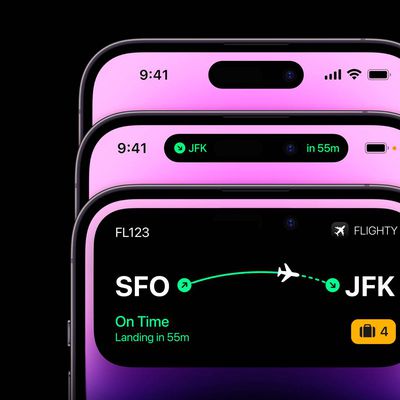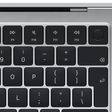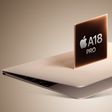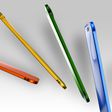Apple Executives Discuss the New A14 Chip and Apple's Approach to Chip Design
Between last month's introduction of the iPad Air with Apple's new A14 chip and tomorrow's expected unveiling of the iPhone 12 said to feature the same chip, Apple executives have been making the rounds talking up the technology behind the A14 and the company's overall chip strategy.
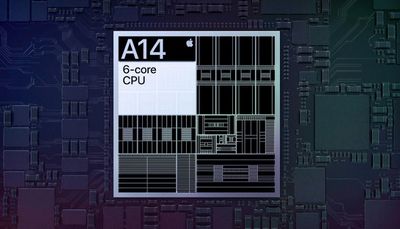
In a new interview with Engadget, Apple's vice president of platform architecture Tim Millet and senior director of Mac and iPad product marketing Tom Boger walked through how Apple has leveraged its ability to customize its own chips to focus on both energy efficiency and performance. Those competing priorities gain some new headroom with the A14 thanks to its transition to a smaller 5nm manufacturing process that packs more transistors into the same chip area and allows them to run at lower power.
The 5nm manufacturing process also allows Apple to devote more of the A14's capabilities to features beyond the traditional CPU and GPU functions, with the Neural Engine in the A14 doubling to 16 cores and capable of performing 11 trillion operations per second, nearly double that of the Neural Engine in the A13.
“We saw the opportunity to do things that would have been impossible to do with a conventional CPU instruction set,” Millet said. “You could in theory do many of the things the Neural Engine does on a GPU, but you can't do it inside of a tight, thermally constrained enclosure.”
On a broader level, Millet and Boger discussed how Apple's chip architecture team thinks about Apple's entire product portfolio, envisioning how its chips can be used not just in a single product but in multiple products over time.
When people at Apple start working on a chipset, they're not solely focused on building one for a single product; they take into account the company's entire lineup. “We spend a lot of time working with the product teams and software teams, and the architecture group really does sit in the center of that,” said Millet. [...]
“Ultimately, we want to make sure that when we build a CPU for one generation, we’re not building it necessarily only for one,” he said. While that doesn’t mean you’ll see the A14’s six-core CPU in something like an Apple Watch, the architecture developed for the company’s flagship phone chipset may well be adapted and reused elsewhere.
With the upcoming launch of Mac products based on Apple Silicon, we'll be seeing even more fruits of the chip team's labor, although Millet and Boger were unsurprisingly not ready to delve into discussions on that topic just yet.
For more on the A14 and Apple's in-house chip work, check out the full piece over at Engadget.
Popular Stories
Apple should unveil the iPhone 17 series in September, and there might be one bigger difference between the Pro and Pro Max models this year.
As always, the Pro Max model will be larger than the Pro model:iPhone 17 Pro: 6.3-inch display
iPhone 17 Pro Max: 6.9-inch displayGiven the Pro Max is physically larger than the Pro, it has more internal space, allowing for a larger battery and...
Since the iPhone X in 2017, all of Apple's highest-end iPhone models have featured either stainless steel or titanium frames, but it has now been rumored that this design decision will be coming to an end with the iPhone 17 Pro models later this year.
In a post on Chinese social media platform Weibo today, the account Instant Digital said that the iPhone 17 Pro models will have an aluminum...
The calendar has turned to July, meaning that 2025 is now more than half over. And while the summer months are often quiet for Apple, the company still has more than a dozen products coming later this year, according to rumors.
Below, we have outlined at least 15 new Apple products that are expected to launch later this year, along with key rumored features for each.
iPhone 17 Series
iPho...
Apple is continuing to refine and update iOS 26, and beta three features smaller changes than we saw in beta 2, plus further tweaks to the Liquid Glass design. Apple is gearing up for the next phase of beta testing, and the company has promised that a public beta is set to come out in July.
Transparency
In some apps like Apple Music, Podcasts, and the App Store, Apple has toned down the...
In 2020, Apple added a digital car key feature to its Wallet app, allowing users to lock, unlock, and start a compatible vehicle with an iPhone or Apple Watch. The feature is currently offered by select automakers, including Audi, BMW, Hyundai, Kia, Genesis, Mercedes-Benz, Volvo, and a handful of others, and it is set to expand further.
Apple has a web page with a list of vehicle models that ...
Apple's next-generation iPhone 17 Pro and iPhone 17 Pro Max are just over two months away, and there are plenty of rumors about the devices.
Below, we recap key changes rumored for the iPhone 17 Pro models.
Latest Rumors
These rumors surfaced in June and July:Apple logo repositioned: Apple's logo may have a lower position on the back of the iPhone 17 Pro models, compared to previous...
New renders today provide the best look yet relocated Apple logo and redesigned MagSafe magnet array of the iPhone 17 Pro and iPhone 17 Pro Max.
Image via Majin Bu.
Several of the design changes coming to the iPhone 17 Pro model have been rumored for some time, such as the elongated camera bump that spans the full width of the device, with the LiDAR Scanner and flash moving to the right side.
...
iPhone 17 models will feature a redesigned Dynamic Island user interface, according to a post today from Digital Chat Station, an account with more than three million followers on Chinese social media platform Weibo. The account has accurately leaked some information regarding future Apple products in the past.
The account did not share any specific details about the alleged changes that are ...
Amazon is back with its annual summertime Prime Day event, lasting for four days from July 8-11, the longest Prime Day yet. As it does every year, Prime Day offers shoppers a huge selection of deals across Amazon's storefront. With the event now underway, we're tracking numerous all-time low prices on Apple gear right now.
Note: MacRumors is an affiliate partner with Amazon. When you click a...








